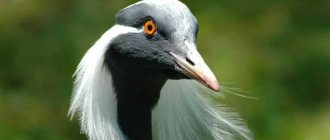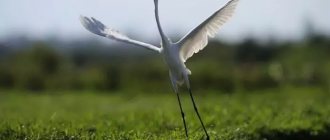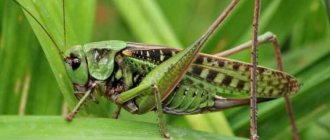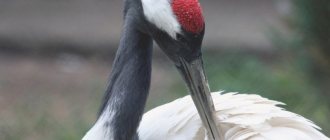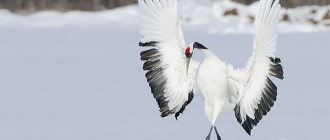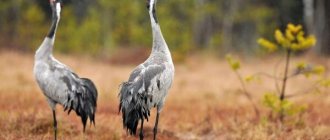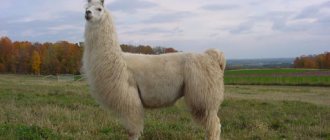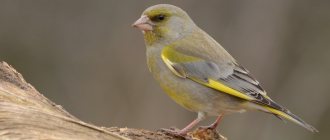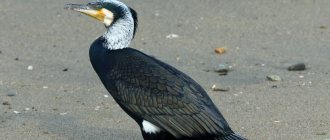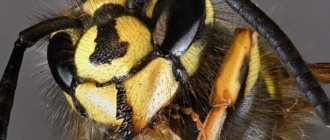- Wild animals
- >>
- Birds
The gray crane is a beautiful and mysterious bird. These birds have been loved and revered by people since very ancient times. Proof of this is the rock paintings left by Pithecanthropus 50-60 thousand years ago. Moreover, similar drawings were found by scientists on all continents. In Ancient Egypt, gray cranes were called “sun birds” and were sacrificed to the gods on special occasions. Today few people worship them, but in Japan these birds are still held in high esteem.
Origin of the species and description
Photo: Gray crane
The common crane (Grus grus) belongs to the Crane family. This is a very spectacular, rather large bird, more than a meter high and with a wingspan of up to two meters. Males can weigh up to 6 kg, and females - up to 5 kg. There is no sexual dimorphism in birds except for weight and size. Almost all the feathers of the gray crane are gray or bluish-gray, which allows it to successfully camouflage itself from predators in wooded and swampy areas.
Video: Gray crane
The back and tail of the crane are somewhat darker than the color of the main plumage, and the belly and wings are slightly lighter; the wings have the color of the main plumage with black feathers along the edges in the form of a border. The front part of the bird’s head is also painted black, or somewhat less often dark gray. The back is usually grey. On the sides of the head are two wide white stripes that begin under the eyes and end at the bottom of the neck.
There are practically no feathers on the crown of the crane's head, and the bald skin has a pinkish-reddish color that looks like a little red cap. The bird's beak is quite light, almost white. The legs are black. Juveniles of gray cranes differ from adults in their somewhat smaller size and the presence of rufous tips on the feathers on the head and neck.
Interesting fact: A popular houseplant, geranium, was named after the gray crane.
Description of the bird
The gray crane (family Cranes) is a large bird 1-1.2 m high, with a wingspan of 1.8-2 m. The weight of an adult male is 6 kg, females - over 5 kg. Life expectancy is 30-40 years.
The maximum recorded age of the bird is 80 years (in captivity). The species leads a migratory lifestyle, nesting in the northern part of Europe and Asia, migrating for the winter to countries with a warmer climate.
What does it look like
Birds have an attractive appearance. In adult individuals, the color of feathers is predominantly gray with a blue-greenish tint on the wings. The back and tail are richly colored, the belly and wings have a lighter shade. The edges of the wings are framed with a black border.
The neck is thin and long. The head from the side of the beak is dark gray, on the sides there are two wide symmetrical stripes from the eyes to the lower part of the neck. On the back of the head, feathers are completely absent; from a distance, an area of bare skin resembles a “little red riding hood.”
The beak is light, up to 30 cm long. The eyes are dark, widely spaced, with a reddish iris. Sex demographics are poorly expressed. Females differ from males only in size.
Juveniles have full plumage on the head and have red tones in color.
Character and lifestyle
The gray crane is a migratory bird, migrating over long distances twice a year (it can fly up to 800 km in a day). Before flying, the crane runs up, flaps its wings in the direction of the wind and soars up.
Leads a daily lifestyle. At sunrise it goes in search of food, and after sunset it falls asleep. The bird sleeps, standing on one leg in shallow water. In spring, pairs nest near bodies of water, on banks densely overgrown with grass. They often return to their original nesting site.
The crane's voice is a loud purr and trumpet sounds, heard at a distance of up to 2 km. Birds use shouts to talk to each other, warn relatives about danger, and call for a partner during mating games.
Molting occurs in the summer, after the end of caring for the offspring. At this time, the crane cannot fly and hides in hard-to-reach places with dense vegetation. The plumage is completely restored by the end of summer.
Young individuals do not molt completely; a gradual change in plumage occurs over two years.
What does it eat?
Gray cranes are omnivores and can eat a variety of animal and plant foods. Main food:
- amphibians - frogs, snakes, newts;
- small rodents - voles;
- fruits and berries of wild trees and shrubs;
- leaves, stems and flowers of herbaceous plants;
- larvae, pupae and adult insects.
In autumn, cranes often visit planted fields, causing significant damage to agricultural crops - grains, peas, potatoes and winter wheat sprouts.
Where does it live?
The crane spends the warm part of the year in northern Europe and Asia. In Russia it is found in large areas of the forest zone. The habitat extends to the river basin. Kolyma and Transbaikalia. In our country, the number of birds is 50-70 thousand individuals.
Prefers to live in swamps, swampy floodplains of rivers and lakes, and ponds overgrown with sedge and reeds. Chooses places near forests, likes to settle near alder groves. Often lives near agricultural lands that serve as food sources.
Reproduction
The gray crane is mohogamous and chooses a mate for life. The union breaks up due to the death of one of the partners, or if the couple cannot produce offspring for several years.
Nest construction begins at the end of March. When choosing a suitable place, the crane notifies its relatives with a loud cry about the occupied territory. Birds never nest nearby; the distance between neighboring clutches is at least 1 km.
The materials for construction are small branches, peat or pieces of moss. The nest is shallow but wide, about 1 m in diameter. In mid-May, the pair begins mating dances, accompanied by bouncing and flapping of wings. A kind of singing sounds performed by both partners.
The female lays two eggs (rarely one or three) in the nest. The eggs are oblong, about 10 cm in size, brown-olive in color. The incubation period lasts 30-35 days. When the female leaves for food, the male is on duty in the nest. Hatched chicks are covered with thick light gray down for up to two months.
The chicks leave the nest as soon as they begin to walk. The family works together to find food for the babies. Full plumage of young individuals occurs 2-2.5 months after birth, after which they begin to obtain food on their own.
Natural enemies
Only old and sick individuals become victims of predators. A healthy adult bird quickly rises into the air, where it feels safe. They destroy nests and eat chicks:
- golden eagles, crows, hawks;
- foxes, raccoon dogs;
- wolves.
Often the enemy of the gray crane becomes a person. In Ethiopia, where large flocks of birds travel annually, natural food is scarce. Birds cause serious damage to crops. Local farmers shoot animals, although this is prohibited.
Wintering
At the end of summer, birds gather in huge flocks of up to several thousand individuals, rest, and gain strength before a long flight. Migration of the species begins at the end of August in the northern regions, in the southern regions - in September-October.
The flocks rise into the air, form a wedge and set off on a long journey. Gray cranes winter in northern Africa, Spain, and France. Birds often winter in Pakistan, Korea, China and India.
In winter, young individuals who have reached sexual maturity select a mate.
Appearance and features
Photo: What a gray crane looks like
As already mentioned, females and males are practically no different from each other. The plumage color of adult birds is predominantly gray, with only some areas painted black or white. The neck of cranes is long, quite thin, one might say graceful. The parietal part of the bird's head is bald, which is not a feature of the species, since several other species of these birds have such a “cap”. The eyes of cranes are small, set on the sides of the head, dark, almost black, with a red iris.
Main features of gray cranes:
- on the neck and head there are two clearly visible white stripes that run along the sides to the back of the head and below;
- height - up to 115 cm;
- wingspan - up to 200 cm;
- male weight - 6 kg, female weight - 5 kg;
- beak length - up to 30 cm;
- in young individuals the plumage is gray, but with red at the ends;
- the skin on the paws is dark gray or black;
- the plumage is gray, which helps to camouflage among tall grass and bushes;
- lifespan - up to 40 years;
- puberty occurs at the age of 3-6 years;
- maximum flight distance per day - up to 800 km;
- During the molting period (summer), the loss of all flight feathers is typical, which is why the birds cannot fly for some time and move only on the ground.
Interesting fact: In nature, gray cranes can live from 20-40 years, and in captivity, birds live up to 80 years.
Lifestyle and habitat
Most species of cranes are wading birds or live near some bodies of water, both fresh and salt water. Many of the species prefer the salty element to the fresh one in winter, moving to sea shores and swamps with non-freezing salt water only during periods of cold weather.
But belladonnas (this also applies to the African variety) have calmly adapted to an existence far from all kinds of water, spending the days of their lives in shrouds and steppe arid areas.
In general, representatives of the described family have spread across a variety of terrestrial climatic zones. Therefore, when talking about the natural enemies of cranes, one should take into account their location.
For example, in temperate regions, raccoons, foxes, and bears are not averse to feasting on their eggs. Newborn crane chicks are a delicacy for wolves. Well, adult individuals are threatened mainly by feathered predators, for example, golden eagles.
In winter, cranes from the northern regions of the planet tend to move to warmer places and fly south . And birds that live in regions with more favorable climates usually do not go on such long journeys, preferring a settled life to the inconvenience of such movements.
In the first of their winters (which is typical, of course, only for migratory cranes) the young go to the southern regions along with their parents, who try to support and protect the inexperienced offspring. However, the spring flight to nesting sites is completed by the mature generation independently (as a rule, they set off on their journey somewhat earlier than the older generation).
Long routes are not covered in one go. And during periods of travel, such birds make one or even several stops in familiar, previously chosen places. And their rest time is about two weeks.
Cranes usually fly beautifully, rising above the ground to a height of up to one and a half kilometers, while moving in the air, catching its rising warm currents. If the wind direction is unfavorable for them, they line up in an arc or wedge.
This form of construction reduces air resistance and helps these winged travelers save their energy.
Arriving at nesting sites, such birds settle exclusively in their areas (such a territory usually covers an area of up to several square kilometers) and actively protect them from the encroachments of rivals. The waking time for such birds is day. In the morning they feed, as well as in the afternoon. At the same time, the daily routine of these clean creatures, as a rule, includes long-term care of their own feathers.
Where does the gray crane live?
Photo: Gray crane bird
The nesting sites of gray cranes are located in Europe (northeast) and Asia (north). Birds usually winter in Africa (north), Pakistan, Korea, India, Vietnam, and the Iberian Peninsula. The birds' habitat preferences include heavily moist areas of swamps, freshwater rivers and lakes. They especially like to settle near alder groves. In search of food, cranes quite often visit pastures and arable lands.
Gray cranes are migratory birds. Twice a year - in autumn and spring, they fly vast distances from nesting sites to wintering sites and back, which requires large energy expenditures. For this reason, at the end of summer, cranes in large numbers (up to several thousand individuals) gather in safe places and rest, gaining strength before departure. Such safe places can be: islands, sand spits, deep swamps.
In the mornings, the birds gather in a wedge and fly to their feeding places, and in the evenings they still return to roost in the same wedge. During this period, the birds are practically not bothered by the presence of people in the fields or the presence of various equipment. It is at this time that you can see them quite close and also hear their voices. At the end of August in the northern regions and at the beginning of October in the southern regions, cranes migrate south. Having wide wings, birds use a flight strategy in which they catch warm air currents (thermals), allowing them to save strength and energy as much as possible.
The flight of cranes to the south is an interesting spectacle: a flock suddenly takes off, begins to circle, emitting purrs, rises higher and higher on air currents, forms a wedge until it completely disappears in the sky.
Now you know where the gray crane lives. Let's see what he eats.
Siberian crane with head down
This type of pattern is done in pencil, where the crane is represented with its head bowed.
Required items:
- Parchment;
- Simple pencil;
- Sharpener and eraser.
Performance:
- To begin with, they sit comfortably in front of the parchment and, charged with a good mood, begin to illustrate. In this case, the crane begins to be depicted from the middle of the paper sheet with a sketch using an oval figure;
- Then draw the head of the bird using a small oval. Connect the parts of the head and body with smooth lines. At the same time, they try to make these lines resemble the neck of a crane. Erase the outline of the head, draw its clear lines and tilt the head part slightly. Draw the eyes and beak of a bird;
- They begin to draw the tail part, depicting a rather fluffy tail. And they draw the paws of the animal. To do this, draw lines from the body, depicting legs with claws curved at the end. Excess details are removed with an eraser;
- Begin to draw the wings and plumage of the Siberian Crane. Moreover, it is recommended to depict feather elements with small dashes. Look through the entire drawing again, if necessary, add and highlight elements on the bird. The illustration is ready! If you really want, you can paint over the crane a little with the same pencil that was used for drawing. Highlighting each element of this sketch with a clear line.
What does the gray crane eat?
Photo: Gray crane in flight
Gray cranes are omnivorous birds, so their menu is very varied and depends on the season.
In the spring-summer period, it is based on:
- small vertebrates - frogs, mice, lizards, snakes, fish, chicks;
- invertebrates - worms, mollusks, crustaceans;
- fruits of trees and shrubs - berries, nuts, acorns, seeds;
- shoots, leaves, flowers of marsh plants;
- insects, as well as their larvae.
In the fall, before leaving for the winter, cranes feed mainly in the fields, where they eat large quantities of agricultural grains and potato tubers that remain after harvesting. Another favorite “dish” of cranes during this period is winter wheat sprouts. Thus, such a high-calorie autumn menu helps the cranes gain strength and energy before a long flight.
If there are fields sown with grain near the cranes’ habitat, the birds will try to feed there, even creating a considerable threat to the harvest. For example, in Ethiopia, periodic raids of gray cranes on newly sown fields are almost a national disaster. Especially considering the fact that there is not much land suitable for farming there (Africa, after all), and the standard of living in this country is relatively low.
Lifestyle
Cranes live in pairs, but can form flocks. Most often they do this before a flight or during an unfavorable season. An interesting feature is the ability of the crane to sleep while standing in the water on one leg.
Crane habitats
Cranes are found on literally every continent. They are not found except in Antarctica and, oddly enough, in South America. They settle near water bodies and in wetlands. It is curious that in summer they prefer fresh water bodies, and in winter they prefer salt water. Only two species of demoiselle cranes can live in the steppe.
Photo: parody.fandom.com
What do cranes eat?
Within their habitat, cranes eat everything they can reach. These are grasses, roots, leaves, berries, legumes, snails, worms, large insects, small mammals and other swamp inhabitants. Chicks attempt to hunt independently from the first days of life.
Photo: fotokto.ru
Wintering
Cranes from the northern regions migrate south for the winter in large groups high in the sky. They fly at an altitude of up to 1.5 km and masterfully use air currents. In fact, cranes do not fly in a wedge all the time and form it only when the wind direction is unfavorable. During the flight, they make several long stops to rest. In the first year of life, young birds fly away with their parents.
Photo: russia.birds.watch
Features of character and lifestyle
Photo: Gray crane from the Red Book
Cranes prefer to live and nest in swampy areas or on the marshy banks of lakes and rivers. Occasionally, a nest of cranes can be found near a wheat field, especially if there is a body of water nearby. The main condition for the nesting site is that it must be well protected.
The nesting period begins quite early - at the end of March. Pairs of birds, having barely arrived and rested, begin building a nest. Cranes may also return to their old nest if it remains intact. The distance between nests is strictly observed. They can be located within a radius of at least 1 km from each other, or even more. Gray cranes usually choose places for nests on hills covered with dense vegetation.
Every year, after hatching the eggs and feeding the chicks, the adults begin molting. During this period, birds are unable to fly because they lose all their flight feathers. During molting, for safety reasons, they try to go to hard-to-reach places. The main plumage of birds is restored even before the onset of cold weather, and the small plumage continues to grow gradually, even in winter. Young cranes molt differently: their plumage partially changes within two years. In the third year of life they fledge as adults.
An interesting feature of gray cranes is their voices. They are loud trumpet sounds that can be heard within a radius of more than 2 km. With the help of these sounds (purring), cranes communicate with each other, warn relatives about danger, and invite their partner during the mating season.
The simplest option
This crane drawing will not take much time and even a child can do it.
To complete the work you will need the following material:
- Sheet of paper A 4;
- Simple pencil;
- Eraser;
- Sharpener;
- Colored pencils or wax crayons if desired.
Performance:
- First you need to position the sheet vertically. Then they begin to draw the bird's head. To do this, draw a small oval at the top of the parchment. It will indicate the contours of the head;
- After this, a large oval is depicted in the middle of the parchment. This will be the body of the bird. Draw the neck, depicting it with the letter “S”. Erase unnecessary strokes on the elements of the neck, connecting it to the body;
- Next, draw a fluffy tail on the opposite side of the neck. Start drawing the beak of the bird. It is depicted as a not very long element. It should not be similar in size to a stork's beak;
- Continue drawing the crane and drawing its eyes on a sheet of paper. They are depicted as two circles that are located inside each other (a small one in a large circle). The plumage is depicted with dashes, highlighting the lines from the beginning of the paws - with curved features;
- Using a couple of lines, add a volumetric part for each leg. Draw the paws, bending their claws slightly down. And add folds to the paws. The final step is to draw the wings and, if necessary, draw clear plumage. Color the sketch. The drawing is ready! If desired, the bird can be depicted standing on a swamp hummock on one leg. It will also turn out to be quite interesting.
Social structure and reproduction
Photo: Family of gray cranes
Gray cranes are birds that prefer monogamous relationships. Couples form for life and break up only after the death of one of the partners. Moreover, the cranes are looking for a mate while still in their wintering areas. Birds usually build nests on small, densely overgrown hills near bodies of water. Material for building a nest: moss, peat, dry branches. The nest is a round shallow bowl with a diameter of up to a meter.
After mating games, accompanied by songs and mating, the female lays 1 to 3 eggs in the nest. This usually happens in mid-May. The incubation period usually lasts 30-35 days. Both females and males incubate the eggs. While one parent flies off to eat and clean its feathers, the second one sits on the nest.
Interesting fact: During the hatching period, for the purpose of camouflage and protection from predators, gray cranes cover their feathers with dirt and silt.
The chicks usually hatch within a couple of days of each other. They develop according to the semi-brood type. This means that as soon as both chicks are dry and can walk, they immediately leave the nest and follow the adults everywhere. Parents find food and immediately feed it to the babies who follow on their heels.
Immediately after birth, gray crane chicks are covered with thick light gray down, which will change to feathers after a couple of months. As soon as the chicks grow feathers, they can immediately fly and feed on their own.
Distribution of cranes in Russia
The gray crane in Russia is represented by two subspecies - western and eastern. they differ little from each other. The border of their distribution, as well as their subspecies independence, has been studied relatively poorly in the country today. Approximately, we can say that the border that separates these two subspecies extends along the Ural ridge. The western subspecies lives in European Russia, and the eastern subspecies lives in Asian Russia.
Moreover, it is known that for the winter, the gray crane flies from the European part of the country to Africa (Morocco, Egypt, etc.), and from the eastern part (living mainly in Siberia) to the north of India or China. A small part of gray cranes overwinter in Transcaucasia.
Natural enemies of gray cranes
Photo: Gray cranes
Adult gray cranes have few natural enemies, since they are quite large, cautious, and good-flying birds. At any, even the slightest threat, the cranes begin to scream, notifying their relatives and rise into the sky, where they feel safe. If any predator happens to be near the nest, then one of the parents diligently tries to take it away, imitating a wounded one.
However, clutches of eggs and fledgling chicks are always in great danger. Crows, eagles, hawks, golden eagles, foxes, wild boars, wolves, marsh harriers, and raccoon dogs can destroy nests and hunt chicks. Also, a large number of cranes may be threatened by people, since birds often encroach on newly sown fields, eating young, barely hatched sprouts of grain crops. In the middle zone this is not a problem - there is plenty of other food in the surrounding area, both animal and plant.
In Africa, with its hot, arid climate, there is much less live food. Therefore, gray cranes often raid farmers’ lands, which is most important for Ethiopia, since a lot of gray cranes fly to this region for the winter. Farmers, seeing whole flocks of cranes in their fields and trying to protect their crops, simply shoot them in large numbers, despite the fact that this is formally prohibited.
Nutrition
Cranes are classified as omnivorous birds. From vegetation, they consume various parts of aquatic and terrestrial plants, including their seeds and fruits.
Favorite foods are grains. As for animal feed, it can be:
- insects;
- amphibians;
- mice;
- snakes;
- lizards;
- shellfish;
- fish.
Population and species status
Photo: What a gray crane looks like
Today, the population of gray cranes in the world numbers just over 250 thousand individuals. Most of it prefers to nest in the countries of Scandinavia and Russia.
One of the main reasons for the decline in numbers is the narrowing of the boundaries of the natural habitat, which is associated with human activity (draining of swamps, construction of dams, large-scale logging, unauthorized shooting).
In total, the number of gray cranes decreased sharply in the 60-70s of the last century, due to the almost global land reclamation carried out in the republics of the former USSR in pursuit of the expansion of fertile agricultural land and the desire of the country's leadership to fulfill the sometimes impossible requirements of a planned economy.
The gray crane is listed in the Red Book of Ukraine, the Red Book of Belarus, as well as the Red Book of the Saratov Region (Russia), under the protection status of “Small species with a relatively stable population and limited habitat.”
Cranes regularly fly to the Saratov region for the purpose of nesting and raising chicks. During this period, very numerous flocks of these birds are observed throughout the region. The number of gray cranes nesting in protected regions fluctuates over the years, but on the whole remains practically unchanged, that is, it does not increase, but does not decrease either.
